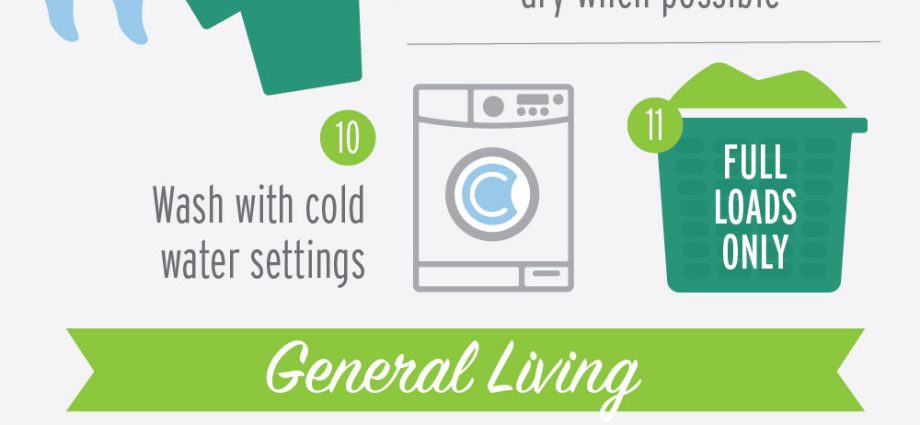Contents
You conscientiously sort garbage, go to the store with a shopping bag, never take a plastic straw to a cafe. Are you ready to expand your arsenal of eco-habits, but without drastic measures? Ecologist Natalie Fee, in her book ECOsapiens, offers several more ways to live in harmony with the environment.
1. Choose chicken Kiev
The best thing you can do to save the planet is to drastically stop eating meat. Since most of the greenhouse gas emissions come from its production. People who eat meat create twice as much greenhouse gases as vegetarians and two and a half times more than vegans.
But if you are not capable of such a feat, opt for chicken and pork dishes. The fact is that the production of beef and lamb is about 10 times more destructive to the planet than the production of meat from other domestic animals.
Cows need 28 times more land than pigs or chickens, and 11 times more water, but besides that, due to the peculiarities of digestion, cows (as well as sheep and goats) produce methane, a gas that is 23 times stronger. than carbon dioxide, contributes to the heating of the atmosphere.
2. Cook ahead
One of the simplest, sweetest, and tastiest eco-friendly solutions is to cook more at home. Forget the overpriced processed food sandwiches, the plastic-wrapped ready-to-eat meals, and the daily cafe lunches that cost a lot of money every day.
You can save money, time, energy and protect your health if you start cooking more than you eat for dinner. Freeze the rest or take it to work the next day.
3. Eat a low-carb diet (not to be confused with a low-carb diet)
Choose low-emission foods more often, such as pulses, quinoa, local fresh fruits and vegetables in season. Ditch palm oil: deforestation for palm plantations releases huge amounts of carbon dioxide into the atmosphere.
Oh, and drink less milk: Dairy production is the fourth largest greenhouse gas emitter. If you decide to switch to plant-based substitutes, then opt for oat milk — it has the smallest carbon footprint.
Don’t buy almond milk, or at least drink it infrequently, because almonds, much of which come from dry California, require millions of liters of fresh water to grow and process. In addition, the pollination of almond blossoms requires large numbers of bee colonies to be imported, threatening local populations.
4. Dress in bamboo
The most environmentally friendly solution is to buy things in a second-hand store. But if it’s hard for you to do without new clothes, take a closer look at bamboo fiber products — this is a natural, environmentally friendly material, a great alternative to cotton and synthetics.
By the way, cotton is officially recognized as the «dirtiest» agricultural product, because it consumes 16% of the world’s insecticides.
Bamboo, on the other hand, improves soil properties rather than destroying it, it grows quickly, thrives without fertilizers and pesticides, and does not need to be replanted. However, «bamboo-based fiber» is not our choice, because it uses chemicals in its production.
Opt for clothes made from organic bamboo. Moreover, “bamboo” clothes are so pleasant to the touch that you don’t want to part with them.
5. Sing in the shower
Hot water is the second major household energy consumer after heating. On average, we spend eight minutes in the shower every day, which means we flush 90 liters of water down the pipe. If we could reduce our shower time to five minutes, we would save tons of fresh water, energy and money.
To cut down on shower time, get into the habit of singing in the shower—finish showering when the song is over. If you need to wash your hair twice a week, then in this case, include one more song in your repertoire.
6. Free the bathroom from plastic
Switch to non-plastic toiletries. Today there are a huge number of them on the shelves.
Try reusable metal or bamboo safety razors, bar soap, solid shampoo, natural toothpaste in a glass jar, bamboo floss in a glass jar, shaving soap, crystal deodorant, paper and bamboo cotton swabs.
7. Get into plogging
Plogging is garbage collection while you run: you go out for a run and bag the garbage that comes your way. That is, squats and inclinations are added to the usual run. In addition, running with garbage collection burns 288 calories, while regular running burns only 235.
8. Practice a «no screen day»
Once a week, stop using devices with screens for the whole day. It is best to set aside Sunday for this event, because on Sundays there is usually no work, and they are more relaxed than Saturdays. Thus, you will consume less electricity and feel more freedom. By the way, you can’t use your phone either.
9. Dose water
Those who pour too much water into the kettle every time they have tea are wasting a huge amount of energy and money, not to mention the emission of carbon dioxide that could have been avoided.
When we boil more water than we need, we instantly add an extra 20 grams to the carbon footprint of a cup of hot drink. Do yourself and our planet a favor and put a kettle near the sink so you can fill it with just the right amount of water.
If you keep the kettle clean, you can increase its efficiency, because the more limescale it accumulates, the more energy is spent on its work.
10. Divide dishwasher tablets
Dishwasher tablets can be easily divided in half: dishes and cutlery will be washed just as well. Load your dishwasher full, don’t be like the people who run the car for three frying pans and one glass of wine.
Source: Natalie Fee «ECOsapiens: simple rules for conscious living» (Eksmo, 2020).
About the Author: Natalie Fee is an environmentalist, writer, and founder of City to Sea, a British organization that campaigns against plastic pollution on the planet.










